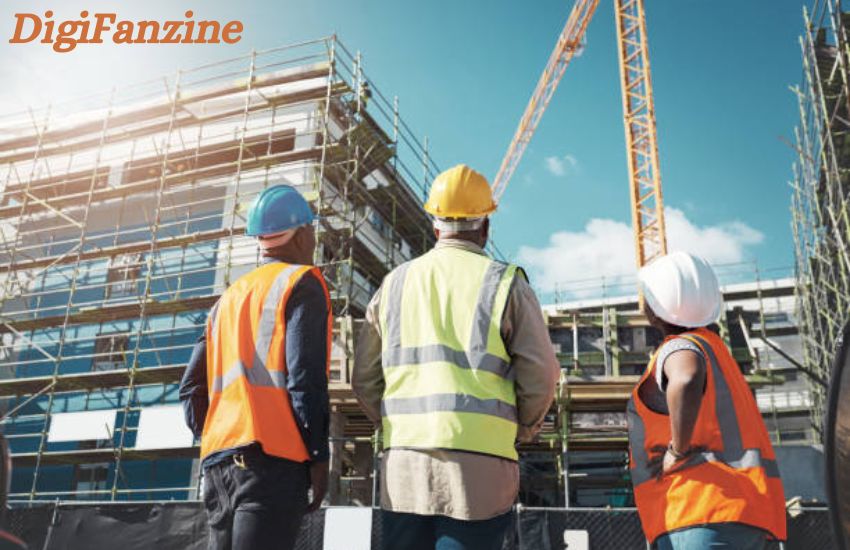Stichting Bouwresearch, often abbreviated as SBR, has been a cornerstone of the Dutch construction industry since its inception in 1946. Founded in the wake of World War II, SBR emerged as a beacon of innovation and progress, addressing the pressing need for reconstruction and modernization. Over the decades, the organization has evolved, embracing new challenges and technological advancements to drive the construction industry forward. This article, brought to you by Digi Fanzine, delves into the multifaceted contributions of Stichting Bouwresearch, exploring its history, key areas of research, notable projects, and future prospects.
The Genesis of Stichting Bouwresearch
Stichting Bouwresearch was established during a pivotal time in Dutch history. The devastation of World War II left the country with a significant need for rebuilding and modernization. Recognizing this, a group of visionary professionals came together to create an organization dedicated to addressing the complex challenges of construction and design. From its humble beginnings, SBR has grown into a multidisciplinary institution, renowned for its cutting-edge research and innovative approaches to building.
Key Areas of Research and Innovation
Energy Efficiency
One of the primary focuses of Stichting Bouwresearch is energy efficiency. The organization has been at the forefront of developing technologies and standards aimed at minimizing energy use in buildings. This includes advancements in insulation, heating, ventilation, and lighting systems. By integrating smart controls and energy-efficient designs, SBR aims to reduce the carbon footprint of the construction industry, promoting sustainability at every level.
Materials Innovation
SBR’s commitment to sustainability extends to the materials used in construction. The organization has pioneered the development and testing of recycled, renewable, and non-toxic construction materials. These innovations not only contribute to reducing the environmental impact of building projects but also enhance the durability and safety of structures. Examples include eco-friendly concrete and bio-based composites that are both sustainable and resilient.
Digitalization in Construction
In the digital age, Stichting Bouwresearch has embraced tools like Building Information Modeling (BIM) and data analysis to revolutionize the construction process. BIM allows for a digital representation of a building’s physical and functional characteristics, improving collaboration, reducing errors, and enhancing project efficiency. SBR’s research highlights the benefits of BIM, promoting its adoption across the industry to optimize design and construction workflows.
Urbanization and Environmental Impact
As urban areas continue to expand, SBR focuses on solutions for sustainable urban development. This includes research on public housing, infrastructure, and the ecological footprint of construction projects. By examining life cycle analysis and circular design principles, SBR aims to reduce the environmental impact of urbanization, creating livable and sustainable cities for future generations.
Notable Projects and Contributions
National Environmental Database
One of SBR’s groundbreaking projects is the National Environmental Database, which uses big data to benchmark building sustainability across the Netherlands. This project provides valuable insights into the environmental performance of various building types, helping to set standards and guidelines for sustainable construction practices.
Living Labs in Amsterdam
In collaboration with the Massachusetts Institute of Technology (MIT), SBR has developed Living Labs in Amsterdam. These labs serve as real-life testing environments for smart building technologies. By experimenting with innovative materials and energy-efficient designs, SBR is able to assess the practical applications of its research, paving the way for more sustainable and smart buildings.
Sonoblok
SBR’s innovation extends to materials like Sonoblok, an eco-friendly concrete brick made from recycled glass. This material not only contributes to waste reduction but also stores CO2, showcasing SBR’s commitment to environmental sustainability and innovative building solutions.
International Influence
Stichting Bouwresearch’s influence reaches far beyond the Netherlands. The organization’s research has shaped sustainability standards and guidelines on a global scale. For example, SBR’s energy performance assessments have influenced the EU Energy Performance of Buildings Directive. Their work on indoor air quality has informed World Health Organization guidelines, while their materials innovation has contributed to ISO safety standards for construction.
Collaboration and Knowledge Sharing
A key aspect of SBR’s success is its emphasis on collaboration and knowledge sharing. The organization works closely with industry partners, research institutions, and universities to drive innovation. By bringing together experts from various fields, SBR fosters a multidisciplinary approach to problem-solving in the construction industry. Additionally, SBR organizes conferences, seminars, and workshops to disseminate its research findings and promote best practices.
Future Prospects and Ongoing Research
As the construction industry continues to evolve, Stichting Bouwresearch remains committed to leading the way in sustainable building practices. Ongoing research initiatives include the development of dynamic thermal insulation materials, digital platforms for construction integration, and biomimetic buildings that mimic nature’s nutrient cycles. SBR is also focused on piloting decentralized microgrid systems for energy-neutral districts, ensuring that their work continues to push the boundaries of what is possible in sustainable construction.
Conclusion
For over 70 years, Stichting Bouwresearch has been at the forefront of innovation in the construction industry. From its early efforts in post-war reconstruction to its current focus on sustainable practices and technological advancements, SBR has consistently driven progress and set new standards for the industry. As we look to the future, Stichting Bouwresearch’s ongoing commitment to research and collaboration will undoubtedly continue to shape the construction landscape, making it more efficient, sustainable, and resilient. Digi Fanzine is proud to highlight the invaluable contributions of this pioneering organization, celebrating its legacy and anticipating its future achievements.
